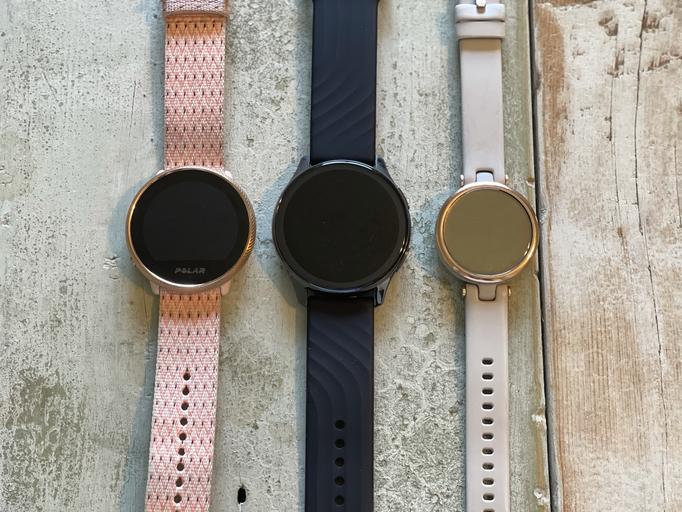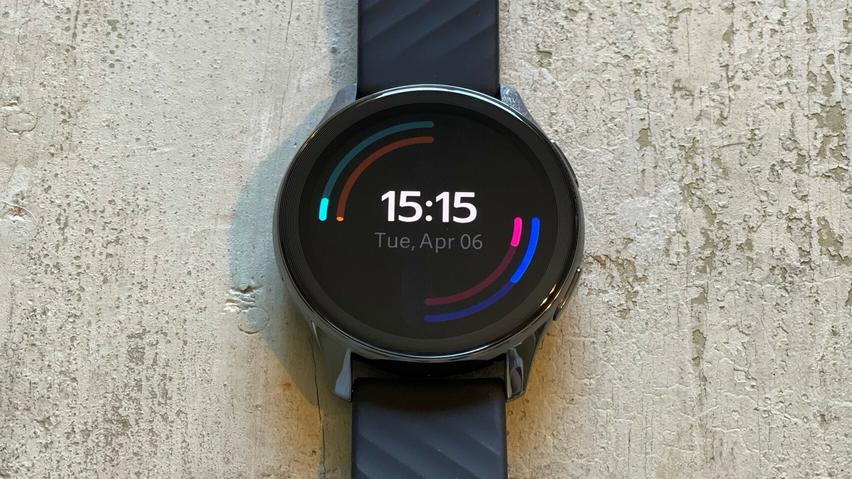I will admit that I was very skeptical before the release of the first smartwatch from OnePlus, which was called the OnePlus Watch. At $159, it's less than half the price of our Editors' Choice award-winning Apple Watch Series 6 (starting at $399), and while it doesn't work with iPhones, it offers many of the same features as the flagship Apple. On the market wearable.
I only tested it for a day, but so far my suspicions seem unfounded. For $159, the OnePlus Watch offers a large color touchscreen display, built-in GPS, 2GB of storage, a 402mAh battery, and promises two weeks of power and the ability to make and receive calls. It also has plenty of health and fitness features, including support for more than 110 types of exercise, automatic exercise detection for jogging and running, quick heart rate alerts, guided breathing exercises, excessive stress detection, and the ability to measure blood oxygen saturation. To find all of these features in any other wearable, be prepared to spend over $159.
I'm testing the OnePlus Watch right now. My full review won't be ready until next week, but I have some ideas to share before then.
When it comes to wearables, aesthetics matter. After all, you wouldn't want to wear something on your wrist every day if you didn't like its design. From a design perspective, the OnePlus Watch has its advantages and disadvantages.
For me, this watch is too big. With a 46.4mm case, it is one of the largest smartwatches I have tested. To give you some clarification, let's compare it to the Apple Watch, which you've likely seen in person. The largest watch in Apple's current lineup has a 44mm case, which means the OnePlus watch is even bigger.
Left to right: Apple Watch Series 6, OnePlus Watch, Polar Grit XAfter testing the Garmin Lily small, I have a new appreciation for small wearables. The Lily has become my everyday watch, not necessarily because of its features - although it packs a lot in its 34mm case - but because of its elegant, feminine design.

If you have a small wrist like me, or if you prefer a smaller watch, this alone may be enough to make you think of something different. On the other hand, if you have a larger wrist, it will probably look good on you. In this case, the size of the watch actually matters, as it has a large screen that provides plenty of information to see your metrics and notifications.

Regardless of case size, the OnePlus watch is less than half an inch (0.43 inches) thick and weighs 73.7 grams, with its fluoro rubber (synthetic rubber) strap, or 45.4 grams without it. It has a 5ATM water resistance rating, so it's safe to swim with it. Overall I feel safe, comfortable and fairly light on my wrist. I wore it to sleep last night and to the bathroom this morning without a problem.
The OnePlus Watch is an attractive wearable that's shocking enough to work out at the gym and then go on a date night out with friends. With its stainless steel case and black strap, it has a masculine look. Adding to the appeal is a 2.5-inch-diameter curved glass face, with a series of micro-rings around the bezel. At first I couldn't put my finger on what those episodes reminded me of. Then I looked at the press release and saw that OnePlus calls it "CD style," which is an apt description.
Some other smartwatch makers, including Apple and Garmin, release both small and large models of their products with many different colors and materials for the case and strap to appeal to a wide range of potential users. The only other model announced by OnePlus is the Cobalt Limited Edition, details of which are scarce. There's no word yet on pricing or availability, but this model will be made from a hypoallergenic colbalt alloy, which OnePlus says is twice as strong than stainless steel and more corrosion-resistant. Its face has also been upgraded to a specially treated sapphire glass with a Mohs hardness of 9 out of 10.
A OnePlus spokesperson says the black strap is the only one the company plans to sell in North America, but the watch is compatible with third-party bands. To feminize it a bit, I swapped out the stock strap for a white Polar Grit X (standard 22mm quick-release strap), and it worked just fine.
The 1.39 inch, 454 x 454 pixel AMOLED display is bright, beautiful and exceptionally responsive.
Many other wearables, even more expensive ones like the Fitbit Sense at $329.95 and the $229.95 Polar Ignite 2, can sometimes feel a little sluggish because they don't respond to touch inputs on the first try. I have not had this issue with the OnePlus Watch. In my limited testing, the display was on par with the Apple Watch, which is fine.
The interface is colourful, well organized and easy to navigate using the touch screen and two physical buttons on the right side of the case. You can swipe left to view boxes such as heart rate, sleep metrics, and music controls. Swipe up for notifications and down for settings like alerts and Do No Disturb mode. To go back, just swipe right. The top button opens the app menu, while the bottom button is a function/power switch that you can customize to quickly open the app of your choice (it defaults to Workout, and I'll probably keep it that way). I've only been wearing the watch for a day, and I really feel comfortable on the go.
It is worth noting that the watch runs OnePlus Watch OS. It is based on RTOS (Real Time Operating System), an embedded system based on an open source platform. I'm curious to know about third-party app support methods.
Given its low price and powerful feature set, the OnePlus watch looks very promising. Over the next week I will begin testing everything from blood oxygen and stress apps to communication features and music controls.
Stay tuned for all the details, and in the meantime, check out our OnePlus 9 and OnePlus 9 Pro reviews. And for other wearable options, be sure to check out our picks for the best smartwatches and fitness trackers.